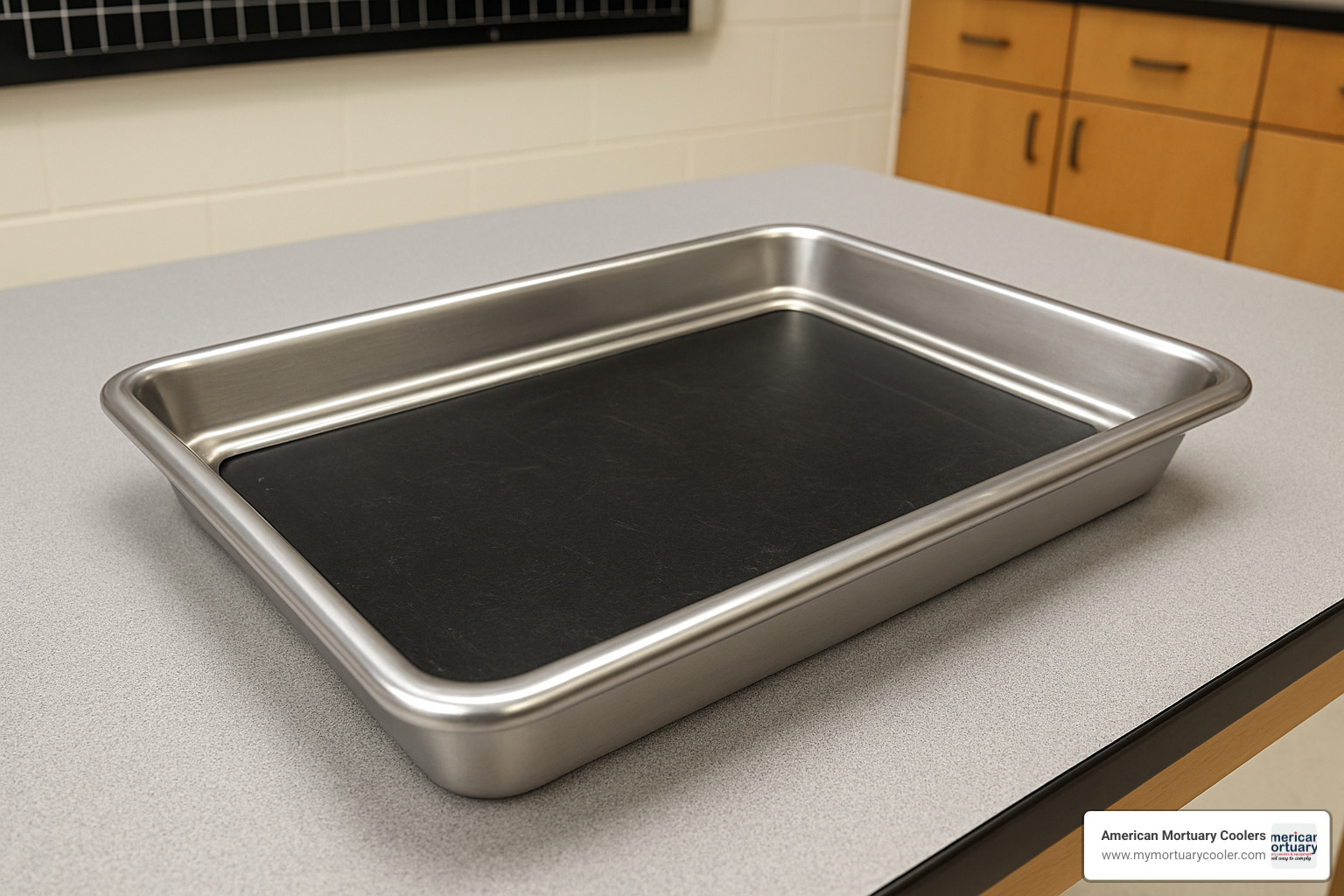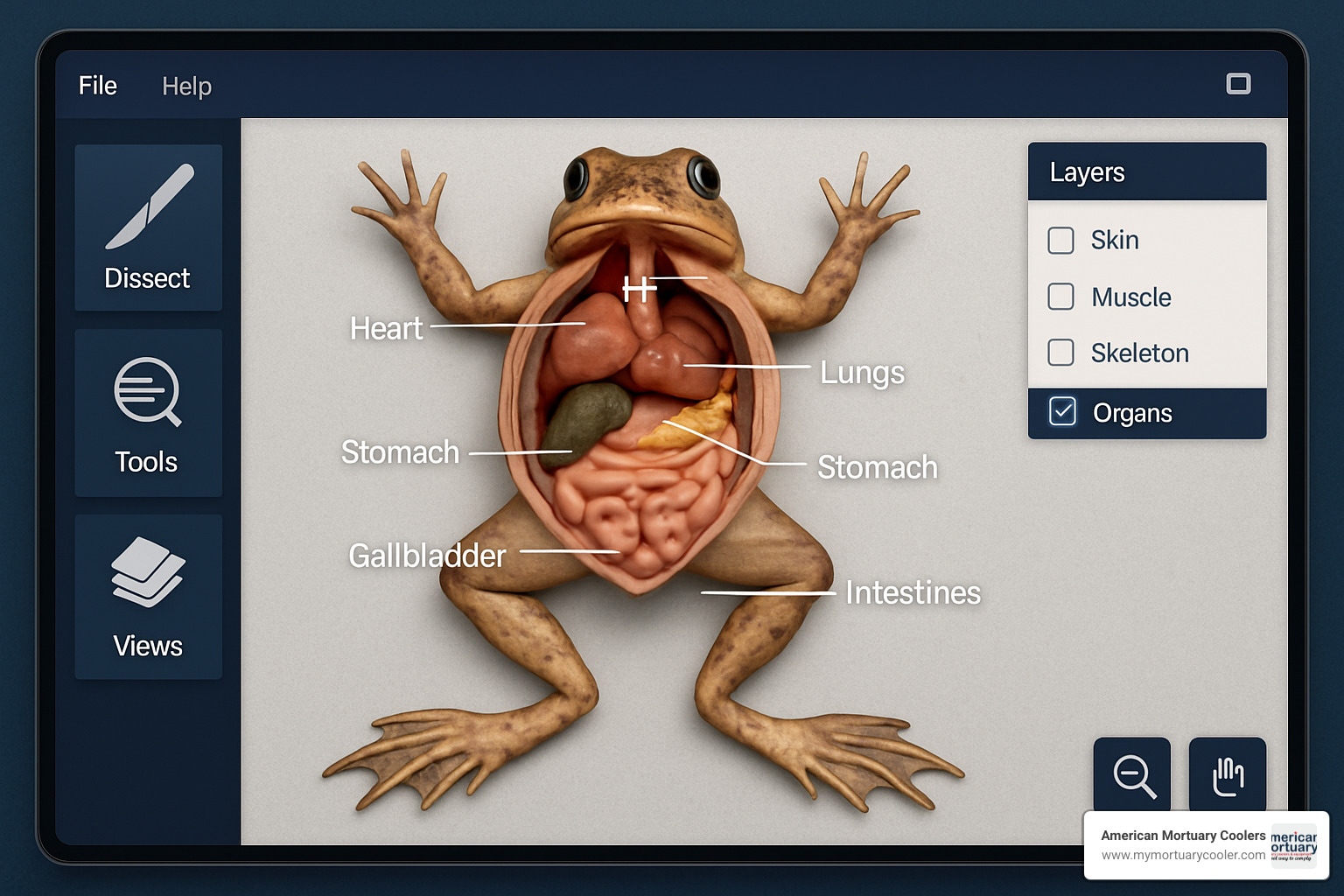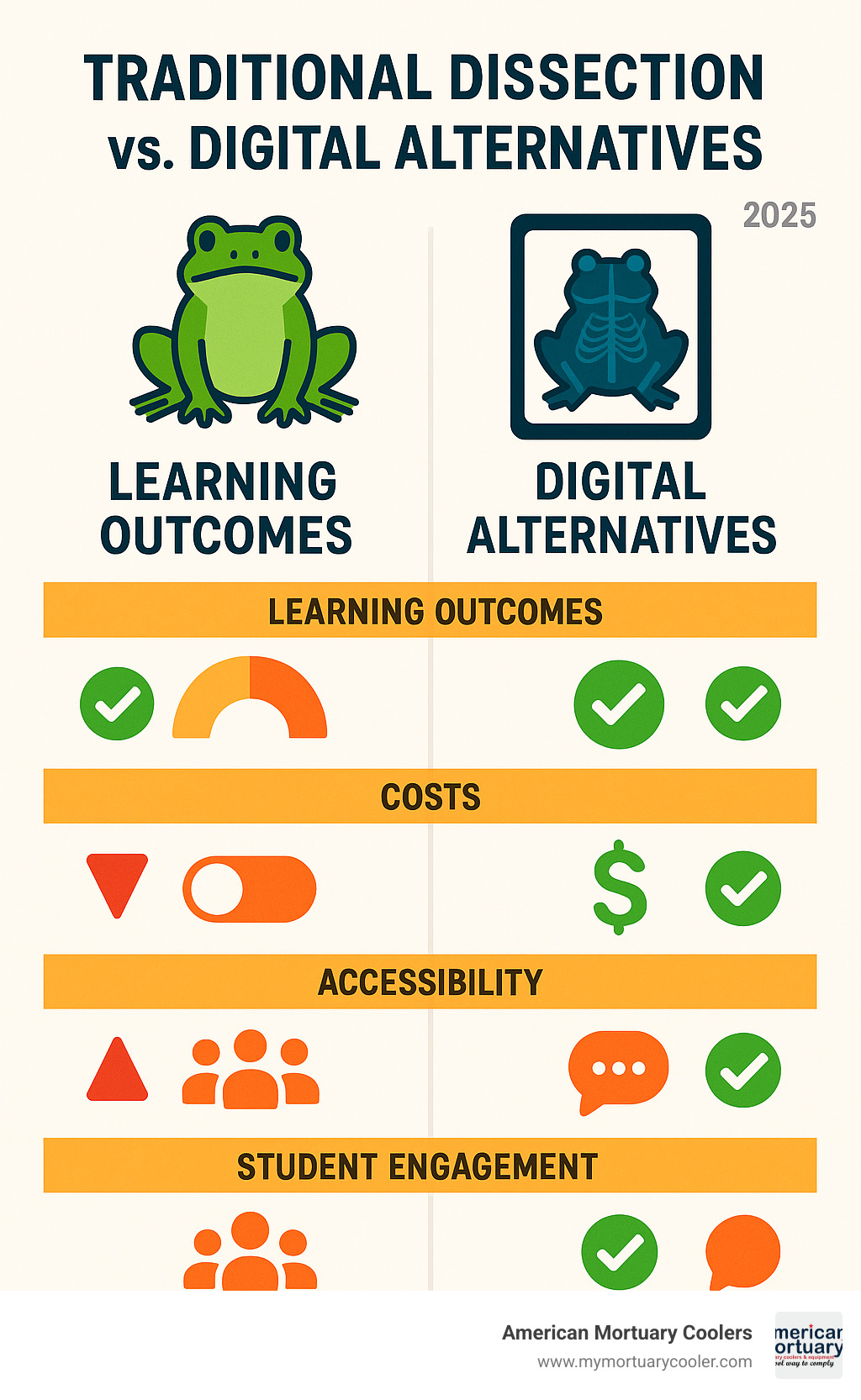Understanding Modern Dissection Equipment for Professional Labs
Dissection equipment encompasses specialized tools and instruments used to examine, separate, and study anatomical structures in educational, clinical, and research settings. Whether you're setting up a new anatomy lab or upgrading existing instruments, understanding the core components helps you make informed purchasing decisions.
Essential dissection equipment includes:
- Cutting instruments - Scalpels, scissors, and blades for precise incisions
- Grasping tools - Forceps and tweezers for tissue manipulation
- Probing instruments - Needles, probes, and seekers for exploration
- Support equipment - Trays, boards, pins, and magnifiers
- Safety gear - Gloves, aprons, and protective equipment
Modern dissection has evolved far beyond the formaldehyde-soaked labs of decades past. Today's equipment features autoclavable stainless steel construction, odorless preservation methods, and ergonomic designs that improve both safety and learning outcomes.
A basic student dissection kit typically contains 23 essential tools, while university-level kits can include up to 20 different specialized instruments. The choice between reusable and disposable options depends on your budget, safety requirements, and frequency of use.

Dissection equipment terms to learn:
Dissection Equipment 101: What It Is and Why It Matters
The word "dissection" comes from Latin, meaning "to cut up" - and that's exactly what it's all about. Dissection equipment helps us carefully separate and examine the parts of organisms to understand how they work. It's been around since ancient Egypt, where physicians first started exploring human anatomy.
Think of dissection equipment as precision tools that let you peek inside nature's most complex creations. These instruments help maintain specimen integrity while revealing intricate structures hidden beneath the surface. Research shows that students who get hands-on dissection experience remember what they learn far longer than those who only read about it in textbooks.
There's something magical about physically handling anatomical structures with proper tools. When you can touch, manipulate, and explore specimens yourself, you develop a spatial understanding that no amount of reading can provide. As someone who's worked with dissection definition, tools & uses for years, I've seen how the right equipment transforms learning from memorization into genuine understanding.
Primary Uses Across Settings
Educational laboratories are where most of us first encounter these tools. High schools and universities rely on dissection kits for biology, anatomy, and physiology classes. Students typically start with basic instruments to examine preserved frogs, cats, or pigs.
Forensic morgues need heavy-duty, professional-grade instruments for complex human examinations. We're talking specialized bone saws, skull breakers, and precision forceps designed for detailed investigative work.
Veterinary clinics use dissection tools for both diagnosis and training. Large animal practices might need robust bone cutters for horses and cattle, while small animal clinics focus on delicate instruments perfect for cats and dogs.
Botany research puts a plant-focused spin on dissection work. Researchers examining plant tissues and fungi structures need modified instruments with ultra-fine points and specialized magnification equipment.
Hands-On Learning Benefits
Students who participate in actual dissection activities don't just learn better - they learn differently. The comprehension boost is measurable, with retention rates that blow textbook-only learning out of the water.
Physical manipulation creates multiple learning pathways at once. Visual learners see the structures, tactile learners feel the textures, and kinesthetic learners engage through movement. Quality dissection equipment makes all of this possible by providing the precision and control needed for meaningful exploration.
The experiential memory created through hands-on dissection lasts a lifetime. Students remember the weight of organs, the texture of tissues, and the spatial relationships between structures in ways that transform their understanding of life itself.
Inside the Dissection Kit: Essential Instruments & Materials
When you're setting up for dissection work, having the right tools makes all the difference between a successful learning experience and a frustrating struggle. A well-designed dissection kit brings together carefully selected instruments that work as a team to help you explore anatomical structures safely and effectively.
Modern dissection has evolved far beyond basic tools. Most professional instruments are crafted from autoclavable stainless steel or aluminum that meets strict ISO standards. These materials stay sharp longer, resist rust, and handle repeated sterilization without breaking down.
Professional forceps alone come in over 65 different styles, and there are more than 40 types of scissors designed for specific tasks. Most educational and professional needs can be met with a much smaller selection of versatile tools.
Core Dissection Equipment Functions
Every piece of dissection equipment serves one of five essential purposes:
Cutting instruments create clean initial incisions and separate tissues without tearing. Grasping tools provide control to manipulate delicate tissues without crushing them. Separating instruments let you gently explore and isolate different structures. Measuring devices help document findings accurately. Securing accessories keep everything in place while you work.
Scalpel, Handle & Blades – Precision Cutting
The scalpel system forms the heart of any serious dissection setup. Understanding how to properly handle these tools - including safe blade removal techniques - keeps you safe and extends your equipment's life.
Most scalpel systems use interchangeable blades that fit onto reusable handles. Handle #3 accepts 10-series blades, while Handle #4 works with 20-series blades. Carbon steel blades offer exceptional sharpness and hold their edge longer than cheaper alternatives.
For educational settings where safety is the top priority, safety scalpels with retractable guards prevent accidental cuts during handling and disposal.
Forceps & Tweezers – Grasping with Control
Choosing the right forceps can make or break your dissection experience. Serrated forceps deserve special attention because they offer superior grip on slippery specimens.
Tissue forceps feature fine teeth that grip delicate structures securely. Dressing forceps have broader, smoother tips for larger tissue sections. Hemostatic forceps include locking mechanisms that maintain pressure without constant hand force. Adson forceps combine precision tips with comfortable handles for detailed work.
Scissors – Sharp vs Blunt
Scissor selection depends on what you're cutting and how much safety margin you need. Tenotomy scissors represent just one specialized option.
Straight scissors deliver maximum cutting power and clear view of your work. Curved scissors shine when you need to cut around anatomical structures. Blunt-tip scissors prioritize safety, while sharp-tip scissors offer maximum precision for detailed work.
Probes, Needles & Pins – Exploring & Securing
Blunt probes with rounded tips separate tissues through gentle pressure. Teasing needles combine sharp points with comfortable handles for precise tissue manipulation. Specimen pins secure tissues in desired positions. Seeker hooks feature curved tips that can reach around structures to explore hidden areas.
Trays, Boards & Accessories
The foundation of good dissection work starts with proper support equipment. Quality trays and boards provide stable working surfaces while containing specimens and fluids safely.

Wax-lined trays accept pins easily while containing fluids. Stainless steel trays offer durability for repeated use. Magnifiers improve your ability to see fine details during precision work. Wetting solutions help maintain specimen moisture during extended examination periods.
Choosing the Right Dissection Equipment for Your Purpose
Finding the perfect dissection equipment doesn't have to feel overwhelming. You need to match your equipment to what you're actually doing, who's using it, and what you can afford.
The size of your specimens makes a huge difference in tool selection. Tiny earthworms need fine-tipped, gentle instruments, while larger specimens like cats or pigs need robust tools that can handle substantial tissues without breaking.
Your students' experience level is equally important. New students need simple, safer tools that won't intimidate them. Advanced medical students should work with professional-grade instruments that mirror what they'll use in their careers.
Student vs Teacher vs Professional Kits
Introductory 7-piece kits work perfectly for students just starting out. Student kits step up to 9-12 pieces with specialized tools for advanced projects. University-level kits pack 20 or more instruments for comprehensive anatomical study.
Teacher demonstration kits include premium-quality instruments plus educational accessories like pointers and magnifiers. Professional pathology sets contain specialized instruments for clinical applications, including heavy-duty tools like bone saws.
Reusable vs Disposable Instruments
The reusable versus disposable debate comes down to more than just counting pennies. Reusable instruments cost more upfront but offer superior quality and long-term savings for frequent users. Disposable instruments eliminate sterilization hassles and reduce contamination risks.
| Factor | Reusable | Disposable |
|---|---|---|
| Initial Cost | Higher | Lower |
| Per-Use Cost | Lower | Higher |
| Sterilization | Required | Pre-sterilized |
| Quality | Consistent | Variable |
| Environmental Impact | Lower | Higher |
Ethical Sourcing & Specimen Considerations
Modern dissection education emphasizes ethical specimen sourcing and humane preservation methods. Those overwhelming chemical smells from old-school formaldehyde are largely history - today's odorless preservation techniques maintain specimen integrity while creating a more pleasant learning environment.
Reputable suppliers provide clear documentation of their ethical sourcing practices and compliance with local regulations.
Innovations & Trends
Digital dissection platforms are changing anatomy education by providing virtual alternatives to traditional wet labs. 3D-printed anatomical models offer reusable alternatives to preserved specimens while maintaining tactile learning benefits.
UV sterilization systems provide rapid instrument decontamination without the time and energy demands of traditional autoclaving. These innovations expand educational possibilities while addressing practical concerns.
Safety, Sterilization & Maintenance Best Practices
Working with dissection equipment demands respect for both the tools and the specimens you're examining. The foundation of any safe dissection lab starts with proper personal protective equipment and understanding proper sterilization techniques.
You'll want nitrile gloves that won't tear easily, lab coats to protect your clothing, and safety goggles to shield your eyes from splashes. Sharps disposal containers aren't just suggestions - they're your best defense against needle stick injuries and contamination.
Steam autoclaving at 121°C for 15-20 minutes remains the gold standard for eliminating pathogens while preserving instrument integrity. Modern autoclaves follow ISO standards that guarantee reliable results when you follow proper loading procedures.

Dissection Equipment Maintenance Checklist
Taking care of your instruments doesn't require advanced training, but it does demand consistency. Five minutes of proper cleaning beats an hour of repair work down the road.
Start with an immediate pre-rinse after each use. Cold water works best because hot water can cook proteins onto your instruments. Ultrasonic cleaning uses sound waves to remove microscopic debris from places your brush can't reach.
Your steam sterilization cycle should become routine. Proper loading means instruments don't touch each other and steam can circulate freely. Dry storage prevents corrosion that destroys even premium stainless steel over time.
Keep a regular inspection log to catch problems before they become expensive repairs. Check for chips, cracks, loose joints, and dull edges.
Lab Safety Rules for Dissection
Safe scalpel handling starts with never handing sharp instruments directly to another person. Always place blades on the work surface and let the other person pick them up safely.
Splash protection goes beyond just wearing goggles. Position yourself so that cutting motions direct fluids away from your face and body. Every lab needs first-aid readiness that goes beyond a basic kit tucked in a drawer.
Storage & Longevity Tips
Quality roll-up cases protect your investment while keeping instruments organized. Simple blade guards extend the life of cutting instruments dramatically while preventing accidental injuries. Regular honing keeps your instruments performing like new without expensive professional sharpening.
Alternatives & Emerging Tools Beyond Traditional Dissection
The world of anatomical education is changing fast. While traditional dissection equipment still plays a vital role in hands-on learning, new technologies are opening doors we never thought possible.
Digital dissection platforms have come a long way from those clunky CD-ROMs. Today's interactive 3D models let students peel back layers of anatomy with the click of a mouse, exploring everything from frog hearts to human nervous systems.
Virtual reality takes things even further. Put on a VR headset, and suddenly you're standing inside a beating heart or walking through brain chambers. Some systems even include haptic feedback, so you actually feel resistance when you "cut" through virtual tissue.
3D-printed anatomical models are game-changers for many programs. Unlike preserved specimens that deteriorate over time, these synthetic models can be used repeatedly while addressing ethical concerns.

When Digital Dissection Makes Sense
Remote learning became a reality for everyone during recent years, and digital dissection tools proved their worth. When students can't physically be in the lab, these platforms keep anatomy education moving forward.
Budget pressures hit educational programs hard, and digital alternatives often make financial sense. The upfront software costs can seem steep, but the per-student cost drops quickly when serving hundreds of students over multiple years.
Ethical considerations matter more than ever to today's students and parents. Digital options respect viewpoints that prefer alternatives to animal specimens while maintaining educational quality.

Complementary Accessories & Large Equipment
Even with digital advances, many programs still need specialized equipment beyond basic dissection equipment kits. Magnification systems like stereomicroscopes reveal details impossible to see otherwise. Precision measuring tools keep everything standardized and documented properly.
Environmental control makes a bigger difference than most people realize. Proper temperature and humidity control prevents specimen deterioration and maintains optimal working conditions. This is where our expertise at American Mortuary Coolers really shines - we've been helping educational institutions maintain perfect storage environments for years.
Frequently Asked Questions about Dissection Equipment
What materials are best for long-lasting dissection instruments?
When investing in dissection equipment that needs to last, high-grade stainless steel stands out as the clear winner. Stainless steel consistently delivers the best combination of durability, corrosion resistance, and sterilization compatibility.
Look for instruments that meet ISO standards and feature autoclavable construction. These specifications guarantee that tools will handle repeated sterilization cycles without losing their edge or developing rust spots.
Aluminum instruments present an interesting middle ground for budget-conscious buyers. They resist corrosion well and cost significantly less than premium steel options, though they won't maintain sharpness quite as long.
For demanding applications, carbon steel blades deliver superior sharpness and edge retention. They require more careful maintenance to prevent corrosion, but the cutting precision often justifies the extra effort.
How do I decide between disposable and reusable tools for my classroom?
This decision comes down to three key factors: how often you'll use the equipment, your available budget, and your sterilization capabilities.
High-volume programs with adequate sterilization facilities almost always benefit from reusable instruments, despite higher upfront investment. When running dissection labs multiple times per week, the per-use cost of quality reusable tools drops dramatically.
Disposable tools make perfect sense for occasional use, programs with limited sterilization facilities, or situations where preventing cross-contamination is your top priority. They arrive pre-sterilized and eliminate cleaning time.
Calculate your per-use costs over your expected usage period, including sterilization supplies, labor time, and equipment maintenance for reusables. Many programs find hybrid approaches - using reusable handles with disposable blades - provide the sweet spot of quality, safety, and economy.
Are there eco-friendly alternatives to animal specimens?
Absolutely, and the options keep getting better every year. 3D-printed anatomical models have revolutionized eco-friendly dissection education. These reusable specimens eliminate disposal requirements entirely and reduce long-term costs since they never wear out.
Digital dissection platforms provide unlimited access without any physical specimens whatsoever. These interactive systems work particularly well for preliminary study and remote learning applications.
Plant-based and synthetic specimens created from sustainable materials offer hands-on experiences without animal use. Manufacturing techniques keep improving, making these alternatives increasingly realistic and educationally valuable.
Some programs successfully combine approaches - using digital platforms for initial exploration, synthetic models for technique practice, and traditional specimens sparingly for advanced study.
Conclusion
Choosing the right dissection equipment doesn't have to feel overwhelming when you understand the basics. Whether you're setting up your first high school biology lab or upgrading a professional pathology facility, the key is matching your tools to your specific needs, budget, and safety requirements.
The world of dissection has come a long way from those pungent formaldehyde labs many of us remember. Today's equipment features better materials, smarter designs, and more options than ever before. You can choose between traditional hands-on approaches and cutting-edge digital alternatives - or combine both for the best learning experience.
At American Mortuary Coolers, we've been helping educational institutions and professional facilities across the contiguous 48 states find equipment solutions that actually work for their unique situations. Based here in Tennessee, we've learned that every lab has different challenges - from tight budgets to storage limitations to varying skill levels.
Quality dissection equipment represents more than just a purchase - it's an investment in curiosity, learning, and respect for the natural world. When students can clearly see anatomical structures, manipulate tissues safely, and explore with confidence, they develop skills and appreciation that last a lifetime.
The future of dissection education looks bright, with new technologies expanding possibilities while traditional methods continue proving their value. By understanding your options and choosing thoughtfully, you're creating learning experiences that inspire the next generation of scientists, medical professionals, and curious minds.
For deeper insights into professional-grade equipment selection and maintenance, check out our comprehensive guide to mortuary tools. You'll find how proper equipment choices improve both educational outcomes and professional results.



















